Teeth Bleaching in Lilburn GA
Teeth bleaching is the most inexpensive way to cosmetically improve one’s smile. There are two methods of bleaching — in-office or at-home. The in-office bleaching is quicker, only needing a couple of one-hour appointments, however, the final result is not as good nor the satisfaction percentage, it can cause sensitivity, and it still needs to be refreshed or supplemented at home. The at-home bleaching method is much kinder and gentler. It can take from six weeks; however, the satisfaction rate is twice as high as the in-office procedure. And the tray is available to refresh the bleaching job after a few months to keep those pearly whites continue to sparkle.
Teeth whitening or teeth bleaching in Lilburn GA, Dr. Richard P. Gangwisch, DDS,
MAGD, ABGD, Dr. Richard Gangwisch performs teeth bleaching on an actual patient. Dr. Gangwisch
performs teeth bleaching in Lilburn, Snellville, Lawrenceville and surrounding communities
of Gwinnett County.
At Killian Hill Dental Care, we recommend teeth bleaching with the at-home method. With that technique, we make molds of your teeth and make a custom tray that is made just for you. You will place a small amount of bleaching gel in an extremely thin, clear mouthpiece called a tray. This is placed on your teeth at bedtime and is worn while you sleep. The gel that we use is slightly sticky so it gently clings to the teeth while you doze. The active ingredient is carbamide peroxide which breaks down into hydrogen peroxide once it comes in contact with saliva. The hydrogen peroxide will break down further into harmless water and oxygen. It is the oxygen that will essentially oxidize the stains in your teeth and this lightens them considerably. Since the concentrations in the at-home method are significantly smaller than the in-office way, the incidence of tooth sensitivity is much less. It does take a number of weeks, but once you get to your ideal brightness, it will usually stay relatively stable for a number of months. The usual rule of thumb is to refresh the bleach for two or three nights after each teeth cleaning, which happens (or should happen) every six months.
Teeth Bleaching
This case was done with simple, at-home bleaching. We made a mold of this patient's teeth, then constructed an extremely thin, clear plastic mouthpiece to hold the bleach. The patient wore this mouthpiece at night while she slept with the bleaching gel for about four weeks. Awesome results without picking up a drill!Click Image to Expand
We do offer the in-office teeth bleaching for those patients who need their teeth whitened fast, such as for an upcoming wedding. At Killian Hill Dental Care, we do not try to put on a fake show with a fancy light. Studies have shown that it’s the hydrogen peroxide that does the teeth bleaching, not the hot light. The heat will greatly raise the amount and intensity of teeth sensitivity. We apply a light-cured paint-on rubber dam to protect your gums. Then we let the bleaching liquid soak into the tooth enamel for three – fifteen-minute intervals. We then apply a desensitizer to help minimize any discomfort.
Teeth bleaching can be very rewarding in that it will increase your confidence to smile widely and to show off those pearly whites.
Internal Teeth Bleaching
This patient had a traumatic injury to her left front tooth. A root canal had to be performed to save the tooth. Unfortunately, teeth that have had root canals will darken over time as you can see in the before photo. We can lighten the tooth, quite often to its original shade, by placing a bleaching agent inside the tooth in the hole where the root canal had been done. As you can see, the results can be quite stunning. This process will need to performed periodically unless other measures, such as a porcelain crown or laminate, is done.Click Image to Expand
Bleaching of vital teeth has been a great thing for cosmetic dentistry. Teeth can be lightened considerably without having to do any invasive drilling or bonding of tooth-colored materials onto the teeth. The cost is significantly cheaper than all other cosmetic dental procedures. Discolorations in teeth can come from many sources. Intrinsic stains (ones that are actually incorporated into the tooth structure itself), include antibiotics (especially tetracycline), fluorosis, and enamel hyperplasia. Aging will also naturally yellow the teeth. Foods such as tea, coffee, red wine, and colas and tobacco products will also discolor teeth. Extrinsic stains, stains that reside on the surface of the teeth, are caused by bacterial plaque accumulations soaking up pigmented food and drink. Extrinsic stains can be removed by a professional cleaning or by using a “whitening” toothpaste that has extra abrasives in it. Since intrinsic stains reside within the tooth enamel, they must be removed by chemicals that have the ability to soak into the tooth structure itself.
Vital teeth bleaching is performed by placing a peroxide-based solution on the tooth surface. Even though tooth enamel is extremely hard, it is somewhat porous which allows the bleaching solution to leach into the tooth. The solution can be either hydrogen peroxide or carbamide peroxide. Carbamide peroxide will turn into hydrogen peroxide when it comes in contact with water. Once the peroxide ion has permeated into the body of the enamel and dentin, it will oxidize the stains that are residing inside the tooth structure thus, effectively lightening the tooth color. Studies have not shown any harm done to the enamel. The peroxide ion has been shown to give off oxygen free radicals which has been implicated as being possibly carcinogenic. No study has shown this to be a problem with short term use of the solutions. However, we personally feel that one should use caution when selecting a “whitening” toothpaste to make certain that they do not contain peroxides. Since toothpastes are used daily for not only years, but decades, we don’t think that it is a good idea to find out after the fact that there was some harm being done.
Before bleaching your teeth, you should have a thorough dental examination by your experienced dentists at Killian Hill Dental Care. One would not want to place bleach over cavities. The bleaching process many times will cause the teeth to be sensitive, so placing bleach into a cavity could increase the sensitivity. Bleaching is also not recommended for children under 16 because their pulp chamber in the center of the teeth where the nerves reside are very large which could make for extremely sensitive teeth. The peroxide ion has been shown to give off oxygen free radicals which have been shown to cause tissue damage. That is something we would not want to take a chance with in a growing child. Other issues include the possibility of gum irritation. The bleaching solutions, especially at the higher concentrations, can be somewhat caustic, and can injure the gums. Most of the time, it is just a temporary reddening and discomfort. This can be reduced by cutting the bleaching time or by switching to a weaker concentration of the bleaching solution. Both sensitivity and gum irritation tend to go away when the bleaching is stopped.
When bleaching one’s teeth, it must be kept in mind that the bleaching process will not affect the color of dental restorations such as tooth-colored fillings, bonding, or porcelain laminate veneers or crowns. It will not harm porcelain, but scanning electron microscope studies have shown some minor pitting in composite (tooth-colored) restorations. Hypocalcified and fluorosed areas have stark white splotches. When initially bleaching the teeth, these areas tend to stand out dramatically, however, as time goes on, the surrounding tooth structure will begin to lighten, thus allowing the hypocalcification to blend in better. Teeth bleaching will not remove these splotchy areas, just make them less noticeable. Many people have grey stains in their teeth. These stains can be very resistant to the bleaching process. The products that cause the grey color do not appear to oxidize as well. On the other hand, yellow stains are very amenable to bleaching and will lighten very well. The nice thing about the grey stain is that it is not as noticeable from a conversational distance as the yellow, so the teeth can still have a light, appealing appearance even with some residual grey.
If you are contemplating any type of orthodontic treatment or cosmetic dentistry, don’t hesitate to make an appointment for
a FREE consultation with our extremely experienced and credentialed Lilburn dentists at Killian Hill Dental
Care. Call
 770-923-3966 today.
770-923-3966 today.




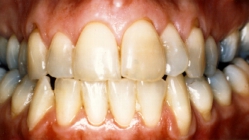

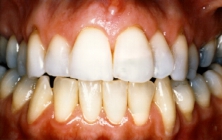

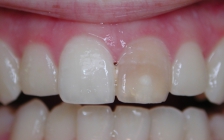
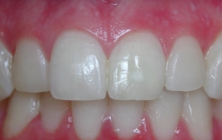

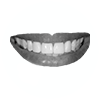


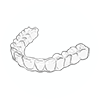

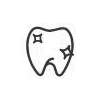


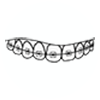

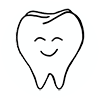
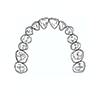






 770-923-3966
770-923-3966